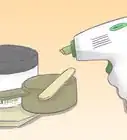This article was written by Marlon Rivas and by wikiHow staff writer, Dan Hickey. Marlon Rivas is a Barber and Owner of MGX Professional Men's Grooming, a barbershop based in the San Francisco Bay Area. He is also the founder of Busystyle.com, a service that provides online scheduling services to businesses in the barbering and beauty industry. Marlon has over 15 years of experience in managing and providing barber services.
This article has been viewed 4,174 times.
It always seems like kids grow up so fast, and before you know it, it’s going to be time to teach them how to shave! A kid’s first shave can be an exciting time for both them and you, and treating it like a fun activity makes it a stress-free, memorable moment for you both. We’ve put together a complete guide to teaching a boy to shave his face and a girl to shave her legs and underarms, including which products are best for sensitive tween skin and how to tell when to pick up a razor for the first time. If you’re ready to get started, keep scrolling!
This article is based on an interview with our professional barber, Marlon Rivas, owner of MGX Professional Men's Grooming. Check out the full interview here.
Things You Should Know
- Teach a boy to shave his face by demonstrating how to exfoliate and then shave with the grain.
- Teach a girl to shave her legs and underarms by showing her how to apply shaving cream and then shave against the grain.
- In both cases, teach basic razor hygiene such as rinsing every few strokes, sanitizing with hot water and alcohol after use, and storing in dry areas.
Steps
Teaching a Boy to Shave his Face
-
1Help your child choose a razor that they feel comfortable using. Electric razors are good for beginners since the risk of cutting yourself is lower and they’re less abrasive against zits and acne-prone skin. However, disposable or cartridge razors give a closer and smoother shave, meaning he won’t have to shave as often.
- It may take some trial and error to find the right fit, so let him try different kinds of razors to see which works best for him.[1]
- If he opts for a non-electric razor, tell him that he’ll need to change the cartridge or throw it away once the blade dulls (usually after about 7 shaves).
-
2Have him exfoliate with hot water before applying shaving cream. Ideally, he’ll take a hot shower and wash his face with an exfoliating scrub to remove dead skin cells, open up his pores, and soften his facial hair. If a shower’s not an option, he can apply a hot towel to his face after washing it.
- Exfoliating before a shave helps prevent razor burn or razor bumps by sloughing away dead skin that clogs razors and pores.
- Heat softens facial hair, which means the razor will glide through more easily instead of getting snagged on stubborn hairs.
Advertisement -
3Show him how to lather shaving cream or gel onto his face. Have him squirt some into his hands and apply a generous layer to his cheeks, chin, around the lips, neck, and throat.[2] A moisturizing cream or gel is best for avoiding dry skin afterward. If he has acne-prone skin, opt for an alcohol- and fragrance-free cream, preferably infused with natural oils, like olive or coconut oil.[3]
- Shaving cream isn’t necessary for a dry shave with an electric razor since the blades don’t touch the skin. If he’s using a water-proof electric shaver in the shower, a thin layer of gel is needed for lubrication.
- Shaving cream or gel lubricates skin so the razor can glide more easily across the face. Tell him to use it every time he shaves to prevent cuts and irritation.
-
4Instruct him to use short, light strokes in the direction his hair grows. Shaving with the grain is the easiest way to avoid razor bumps and irritation, especially for sensitive, first-time skin. As his face gets used to it, he can try shaving across or against the direction of growth in the future for a closer shave.
- It’s best to start on the cheeks and sides of the face where there’s more room to work on his technique. The chin, jawline, neck, and upper lip require more precision and should be last.
- Hair on different parts of the face might grow in different directions, so remind him to double check which way he’s shaving as he tackles new areas.[4]
- Tell him to use light pressure while he shaves to prevent cuts, and to never try and shave off acne (this will lead to worse acne or even scarring).[5]
- If he opted for an electric razor, tell him to apply gentle pressure to his face and simply move the razor around to areas that need to be shaved.
-
5Remind him to rinse his razor with hot water after every few strokes. This removes shaving cream and hair from the blades and keeps the razor from getting clogged. A clogged razor won’t give as smooth of a shave, and it makes irritation, razor bumps, and razor burn more likely.[6]
-
6Have him rinse his face with cold water and apply aftershave. Tell him to splash away any remaining cream and loose hairs and then gently pat his face dry to avoid irritating his freshly shaved skin.[7] Aftershave is optional, but if he wants it, opt for just a small amount of moisturizing aftershave. Tell him to rub a little bit of it in his hands and pat it onto the areas he shaved.
-
7Tell him to clean the razor blade with hot water and alcohol. A sanitized razor is a must, especially for acne-prone skin. Razors easily collect germs that can infect or irritate the face (and make acne worse). After each shave, have him rinse it with hot water, soak the blades in alcohol for a few minutes, then rinse with hot water again.
-
8Explain basic razor hygiene rules. Remind him to throw away or change blades after about 7 shaves (dull blades make for a more painful, uneven shave) and to always dry his razor after cleaning it and store it in a dry area (not in the shower or on a wet sink). Most importantly, emphasize that sharing his razor with anyone else is never a good idea.[8]
- Sharing razors increases the risk of spreading germs, infection, or even bloodborne pathogens between users.
Teaching a Girl to Shave her Legs and Underarms
-
1Help your daughter decide which type of razor to use. Electric razors are less likely to cause cuts and are used on dry legs and underarms.[9] Disposable or cartridge razors provide a closer shave and are used on wet legs (generally in the tub or shower).[10]
- Electric razors don’t require shaving cream or gel.
- It might take some trial and error to find the right razor, so allow your daughter to try different kinds until she finds one she’s comfortable with.
-
2Instruct her to take a hot shower or bath before shaving. The heat will soften her body hair and open up her pores, making razor bumps and razor burn less likely. Tell her to wash her legs and underarms before shaving to make the hair removal easier.[11]
- If she’s using a non-electric razor, she’ll stay in the tub to shave. To use an electric razor, she’ll have to get out and dry off first.
-
3Show her how to apply shaving cream to her legs and underarms. Make sure she evenly covers the front and back of each leg, as well as the knee area. It’s helpful to think of the leg in 3 parts—the lower part (below the knee), the upper part (above the knee), and the knee itself.[12]
- Opt for a moisturizing shaving cream to nourish the skin and reduce the risk of razor burn.
- If she’s using an electric razor, have her exit the tub and pat her legs or underarms dry instead of applying a cream or gel.
-
4Have her shave against the direction of hair with short strokes. Tell her to begin near the ankle and shave upward toward the knee, lifting the razor between strokes to minimize cuts.[13] Remind her to keep the pressure light around the ankles and knees since they’re curvier.[14]
- Have her shave the lower leg first, and then the upper leg.
- Electric razors also move against the direction of hair growth. Tell her not to shave over the same area multiple times, as this will cause more skin irritation.
- For underarms, have her pull her skin taut while she shaves. She can shave in all directions, not just against the grain, to eliminate underarm hair.
-
5Tell her to straighten her leg to navigate around the knee. This way, the knee is flatter and more manageable. Have her continue to use upward strokes against the grain of her hair. It might be helpful to pull the skin taut above the knee to make the skin smoother.[15]
- Tell her she can shave in curved, C-shaped lines around her kneecaps and ankle bones to reduce cuts. A razor with a pivoting head can navigate these bony areas safely.
- Reinforce that light pressure reduces cuts in sensitive areas. Tell her to relax and let the razor do the work!
-
6Remind her to rinse off her razor after every few strokes. It’s important to keep the razor free of shaving cream and hair since a clogged razor will tug at the skin and increase the risk of razor bumps and burn. Have her use hot water from the tub or sink faucet to clear the razor before continuing.[16]
-
7Tell her to rinse off and apply moisturizer after shaving. After an electric or non-electric shave, have her jump back in the shower to rinse shaving cream and loose hair off her legs and underarms. After patting dry, give her a moisturizer to apply over all shaved areas.[17]
-
8Show her how to sanitize her razor with hot water and alcohol. After every shave, have her rinse her blade thoroughly in hot water and then soak it in an alcohol disinfectant for a few minutes to kill germs. After another hot water rinse, she can dry it off and store it.
-
9Review basic razor hygiene rules. Remind her that disposable razors need to be thrown away and cartridges replaced when the blades become dull (usually after about 7 shaves).[18] Emphasize that razors need to be kept in dry areas (no showers or sinks) and most importantly, it’s very unhygienic to share razors.[19]
References
- ↑ https://www.aad.org/public/everyday-care/skin-care-basics/hair/how-to-shave
- ↑ https://kidshealth.org/en/teens/shaving.html
- ↑ https://timesofindia.indiatimes.com/life-style/beauty/how-to-shave-if-you-have-acne/articleshow/65009752.cms
- ↑ https://kidshealth.org/en/teens/shaving.html
- ↑ https://www.aad.org/public/everyday-care/skin-care-basics/hair/how-to-shave
- ↑ https://kidshealth.org/en/teens/shaving.html
- ↑ https://kidshealth.org/en/teens/shaving.html
- ↑ https://www.aad.org/public/everyday-care/skin-care-basics/hair/how-to-shave
- ↑ https://www.healthychildren.org/English/ages-stages/gradeschool/puberty/Pages/Physical-Development-Girls-What-to-Expect.aspx
- ↑ https://scholarworks.iu.edu/dspace/bitstream/handle/2022/13420/DubieWomanShave11.pdf?sequence=1&isAllowed=y
- ↑ https://www.aad.org/public/everyday-care/skin-care-basics/hair/how-to-shave
- ↑ https://scholarworks.iu.edu/dspace/bitstream/handle/2022/13420/DubieWomanShave11.pdf?sequence=1&isAllowed=y
- ↑ https://scholarworks.iu.edu/dspace/bitstream/handle/2022/13420/DubieWomanShave11.pdf?sequence=1&isAllowed=y
- ↑ https://www.healthychildren.org/English/ages-stages/gradeschool/puberty/Pages/Physical-Development-Girls-What-to-Expect.aspx
- ↑ https://scholarworks.iu.edu/dspace/bitstream/handle/2022/13420/DubieWomanShave11.pdf?sequence=1&isAllowed=y
- ↑ https://kidshealth.org/en/teens/shaving.html
- ↑ https://scholarworks.iu.edu/dspace/bitstream/handle/2022/13420/DubieWomanShave11.pdf?sequence=1&isAllowed=y
- ↑ https://www.aad.org/public/everyday-care/skin-care-basics/hair/how-to-shave
- ↑ https://www.healthychildren.org/English/ages-stages/gradeschool/puberty/Pages/Physical-Development-Girls-What-to-Expect.aspx
- ↑ https://childrensmd.org/browse-by-age-group/teens/when-should-my-son-start-shaving/
- ↑ https://www.healthychildren.org/English/ages-stages/gradeschool/puberty/Pages/Physical-Development-Girls-What-to-Expect.aspx
- ↑ https://kidshealth.org/en/teens/shaving.html
- ↑ https://kidshealth.org/en/teens/shaving.html
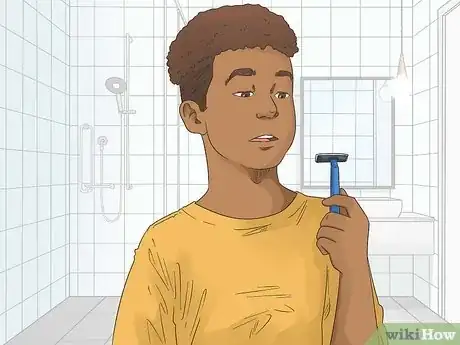

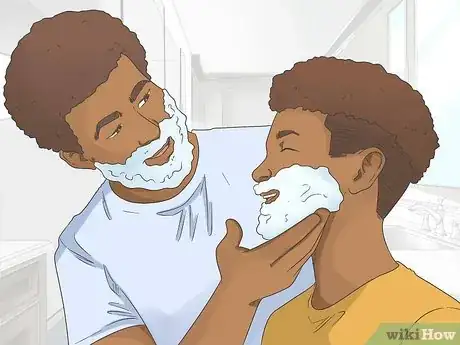
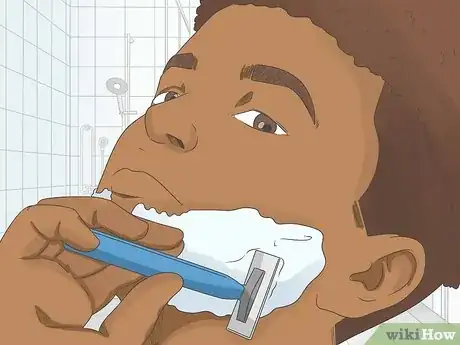
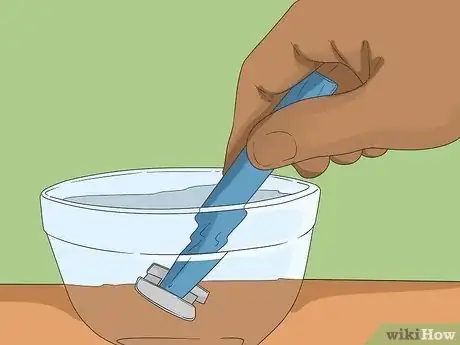

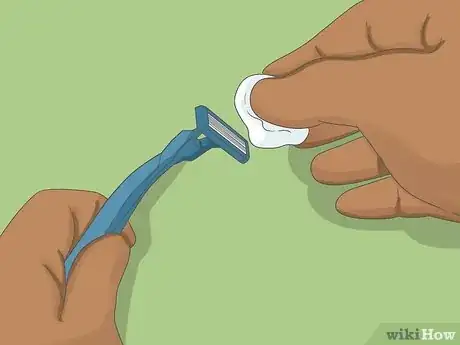
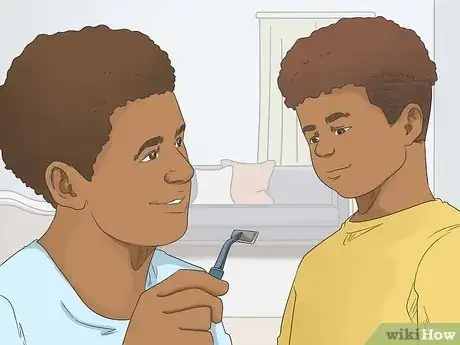
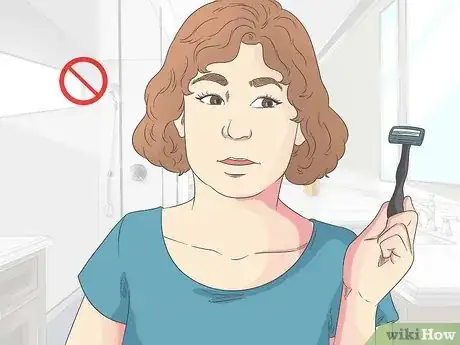

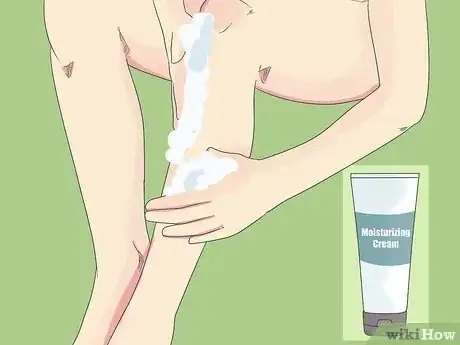
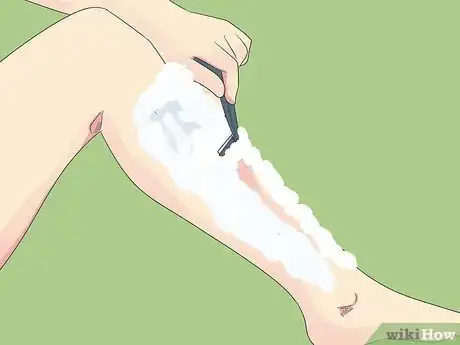
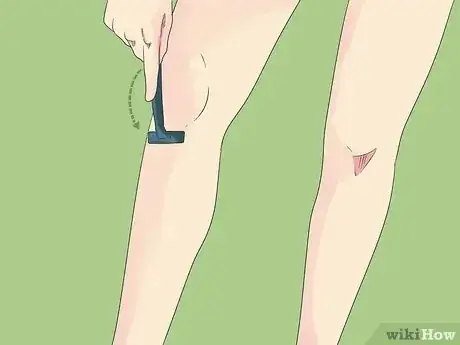
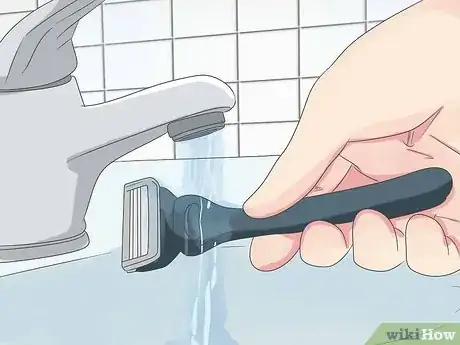
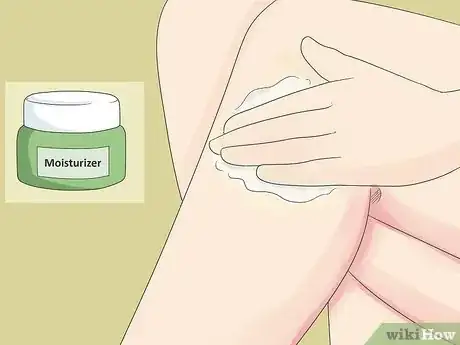

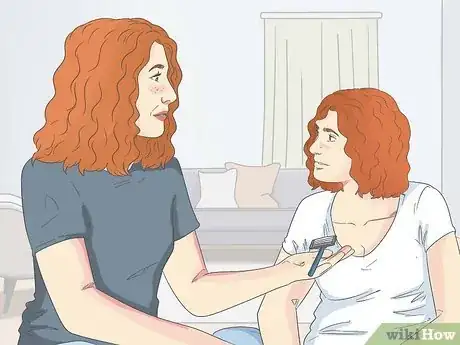
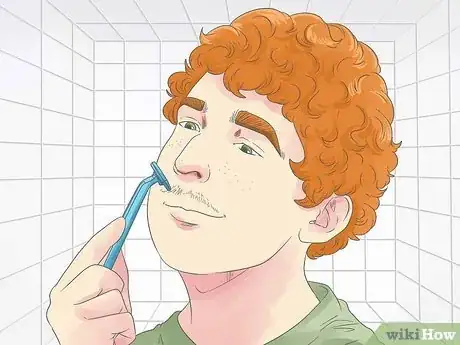
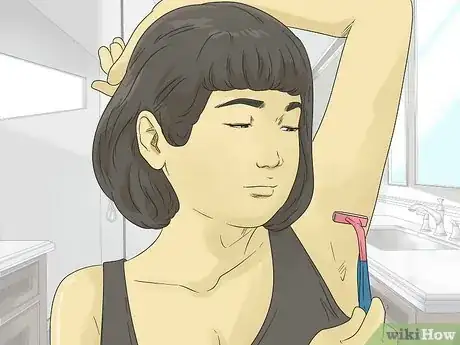
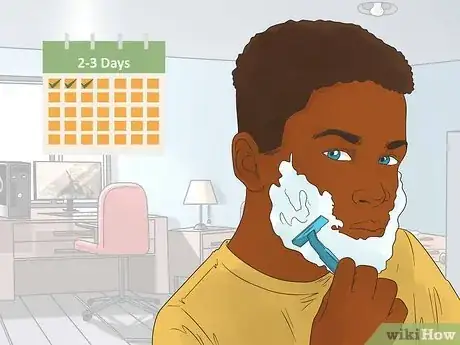
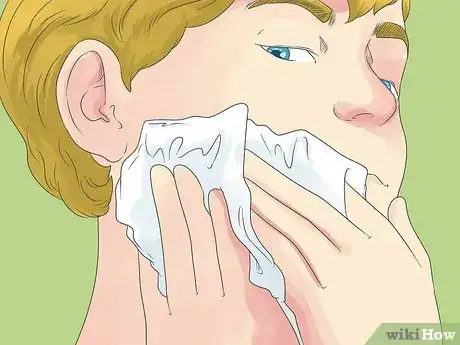
-Step-14.webp)

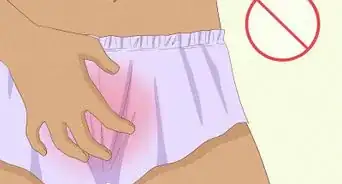



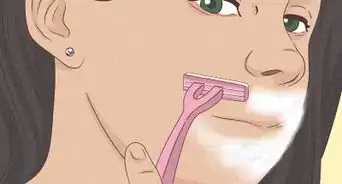
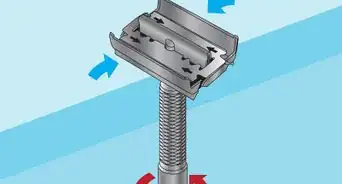

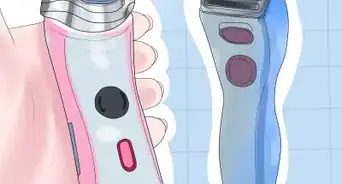
-Step-10-Version-2.webp)
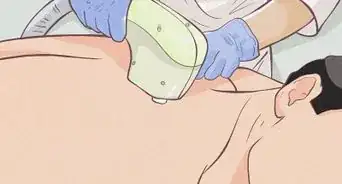
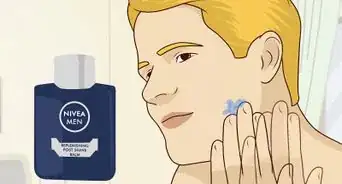







-Step-14.webp)


